
In La Barceloneta, everything arrives by sea
It would be very difficult to find a scenario as
It is a neighbourhood where the men went out daily to fish and the women were in charge of placing the fish in “pilas”, which were column-shaped piles with the recently caught fish and seafood assortment, or in “capazos” (baskets). They were sold in the early afternoon, as soon as the boats arrived, at the Muelle del Reloj. This is known locally as “la Platjeta”. The children at home who were not yet old enough to go fishing were in charge of selling the fish at the Mercat de la Boqueria and the Mercat de la Barceloneta. But part of these catches had previously been cooked in the boat for the crew. And another part, often the envelopes that were not sold ended up in the family kitchens of the fishermen and other neighbors of the neighborhood. This is where the local gastronomy was born.
On board cooking
During the fishing day, the fishermen basically ate what they caught. In their cramped kitchens, a sailor would prepare the meal for the whole crew in a casserole dish. Basically, a tomato, an onion, potatoes, noodles or rice, garlic and oil were enough to accompany the freshly caught fish. It was what is known as “cocina de a bordo” (“shipboard cooking”). It was born humble but tasty thanks to a product of unbeatable freshness.
Housewives
Parallel to these “chefs on board”, there were the housewives. Grandmothers, mothers, and wives with an admirable culinary knowledge transmitted from generation to generation and exceptional ingredients: the leftover fresh fish brought by their husbands from the sea. A cuisine a little more elaborate than the aforementioned “on board” because they had more time and means for its preparation.
A cuisine that, in those times, became very appreciated by the first tourists of the neighbourhood and by the rich gentlemen of the city who came down to taste it on weekends.
Thus, dishes of simple origin, almost of subsistence, were transformed into a highly valued cuisine. They are recipes improved and evolved in the kitchens of the neighbourhood, always based on the quality of a product freshly caught and landed on the day a few meters away. This was and is the secret.
Curiously, for the fishermen families this fish of the day that was not sold and taken home was not a luxury, it was the daily maintenance that they sometimes had to carry with them as part of their payment. In Barceloneta, eating fresh shrimp was common, but eating chicken, for example, was exceptional.
Los merenderos
Some local families saw the opportunity to turn this highly appreciated local cuisine into a business. Thus, the first eating houses were opened on the Barceloneta beach at the end of the 19th century, when many fishermen used part of their catch to cook and offer meals.
In the post-war period, there was a boom in the opening of restaurants on the seafront, located between the San Miguel Baths and what would become the beginning of the Paseo Marítimo. There, a promenade was formed parallel to the coastline where a diversity of restaurants had concentrated one next to the other. They were the Merenderos. Faithfully local cuisine at the foot of the beach and with the employees that went out to the street to look for the client and offered them a place to park the vehicle. These Merenderos, as they were popularly known, had terraces in the back part with decking on the beach or they directly fixed the tables of the diners on the sand.
Fresh fish and simple recipes
The basics of seafood cooking are quite simple. All that is required is a lightly spiced and mild broth, so that it does not hide the flavour of the fish or seafood. Olive oil, a good mince and tomato sauce are all the seasoning required for this type of stew. That is why it is so important to use local fish. There is no other secret. A product of maximum freshness needs little cooking and requires less “disguise” to hide its flavour. For that reason, the original recipes recommended not to abuse lemon, vinegar, nor aromatic plants.
La zarzuela
In the sixties and seventies, zarzuela was the representative dish of Barceloneta. The star of the longed-for “Merenderos”. Nowadays it is considered a “demodé” dish that we will hardly find in the menus of our restaurants. Zarzuela was eminently popular and Mediterranean. Each family had its own tastes. It was a dish adaptable to the product and proportion that the cook had available at the time or the available budget.
Zarzuela recipe (for 4):
Ingredients:
4 cuts of monkfish, 4 cuts of hake, 4 slices of squid, 4 shrimps, 4 crayfish, 4 clams, 1 cayenne or chili pepper, 1 tablespoon of tarragon, 1 tablespoon of chopped nuts, 1 glass of brandy, 1 l. of red fumet, wheat flour, salt, olive oil.
Preparation:
Vicens Forner
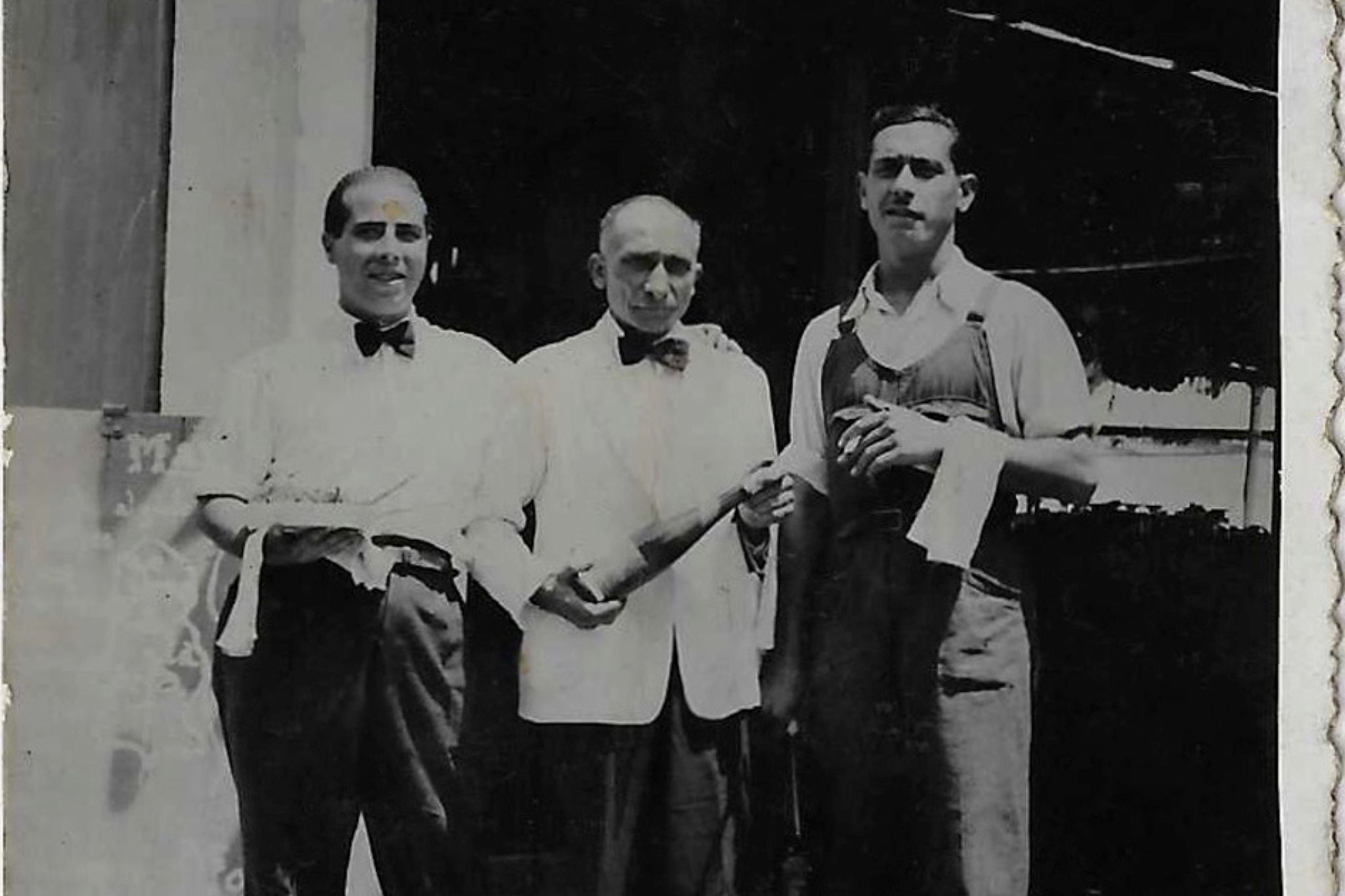
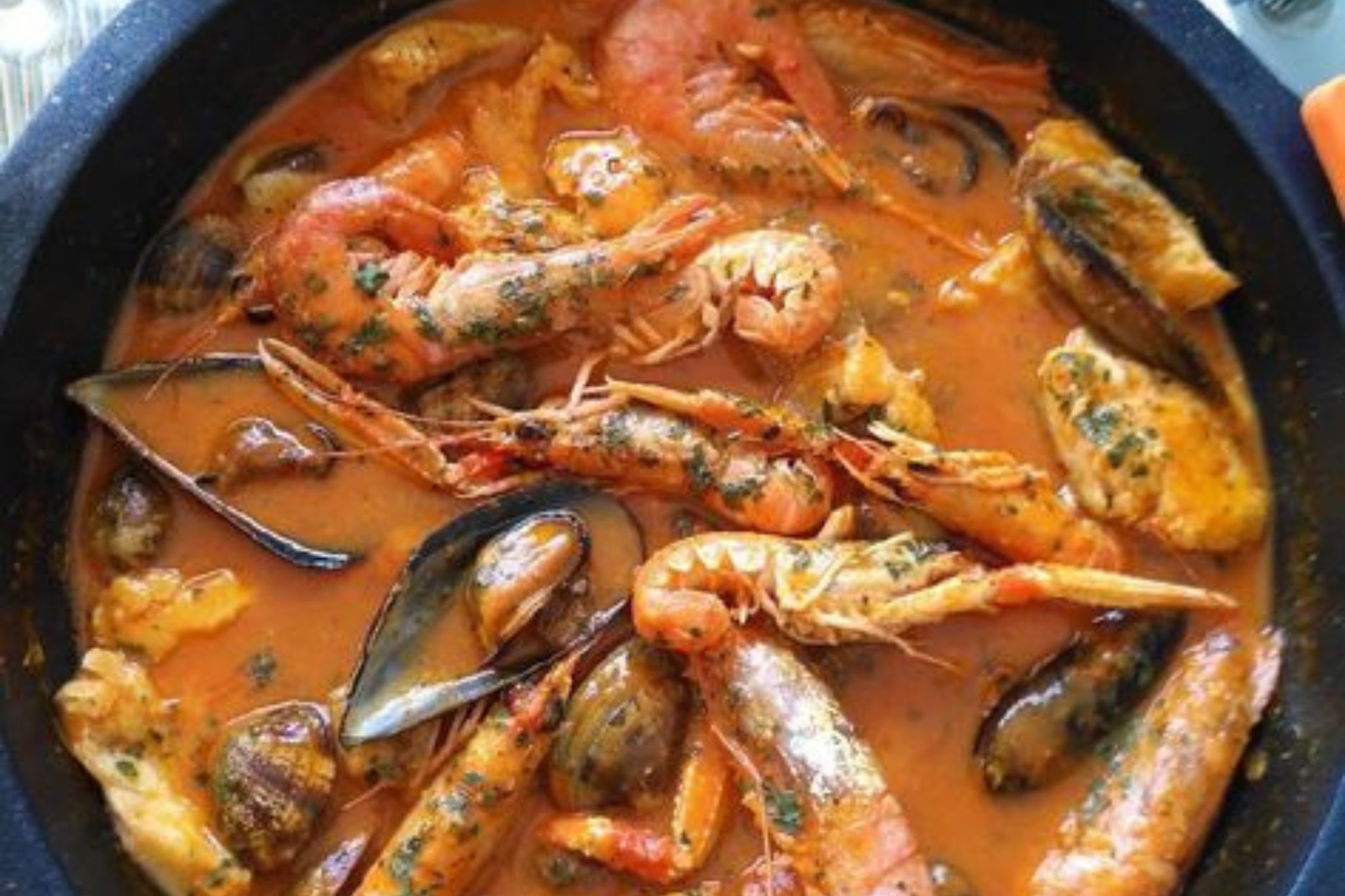
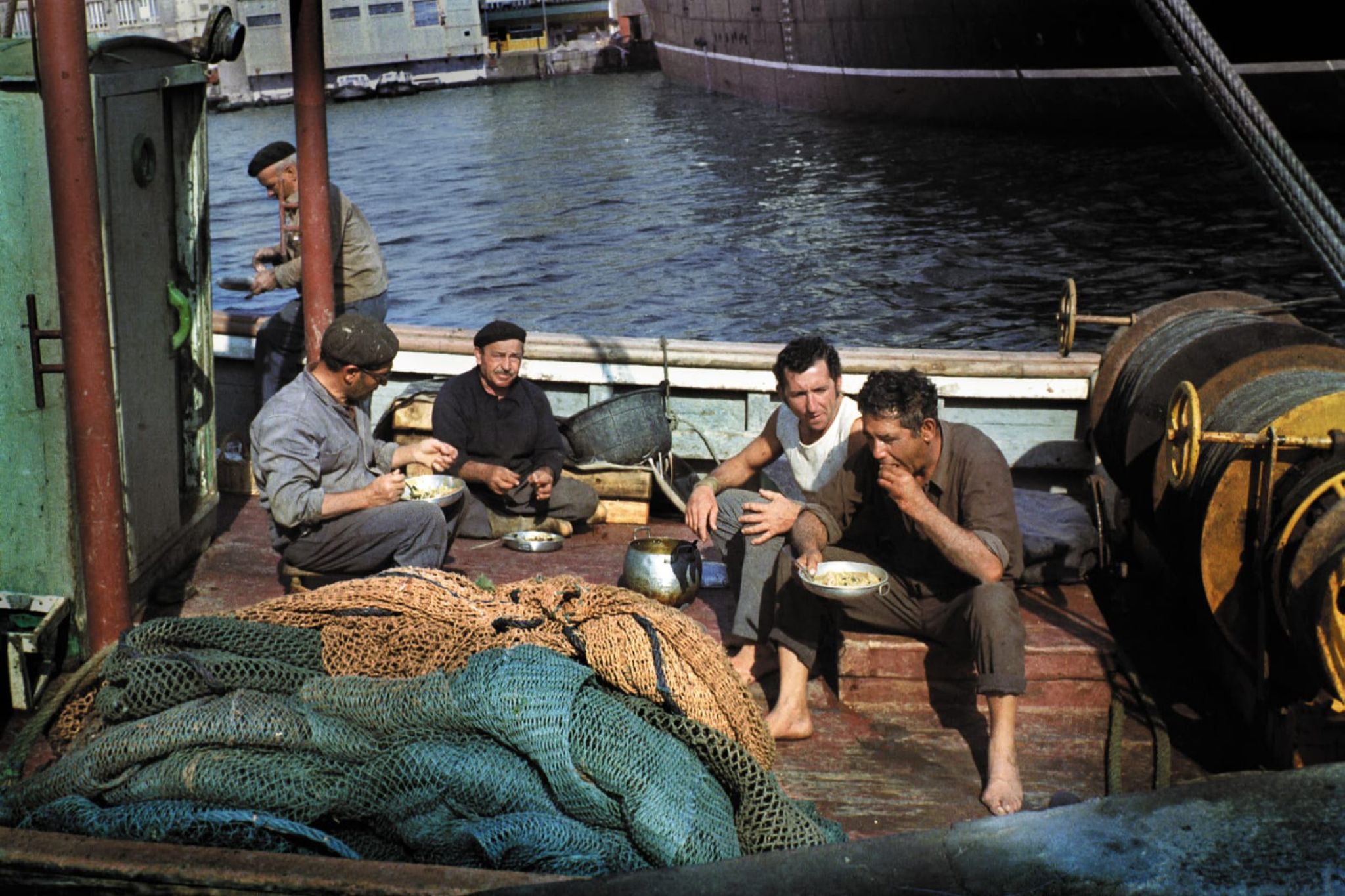
You may also be interested in

It would be very difficult to find a scenario as
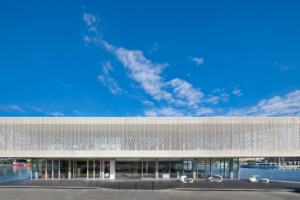
Celebrating Christmas is one of Marina Puerto Viejo’s most cherished
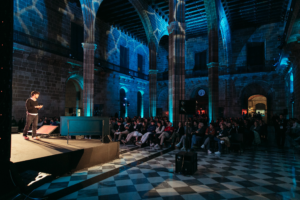
The 4th edition of the benchmark event for the technology

More articles
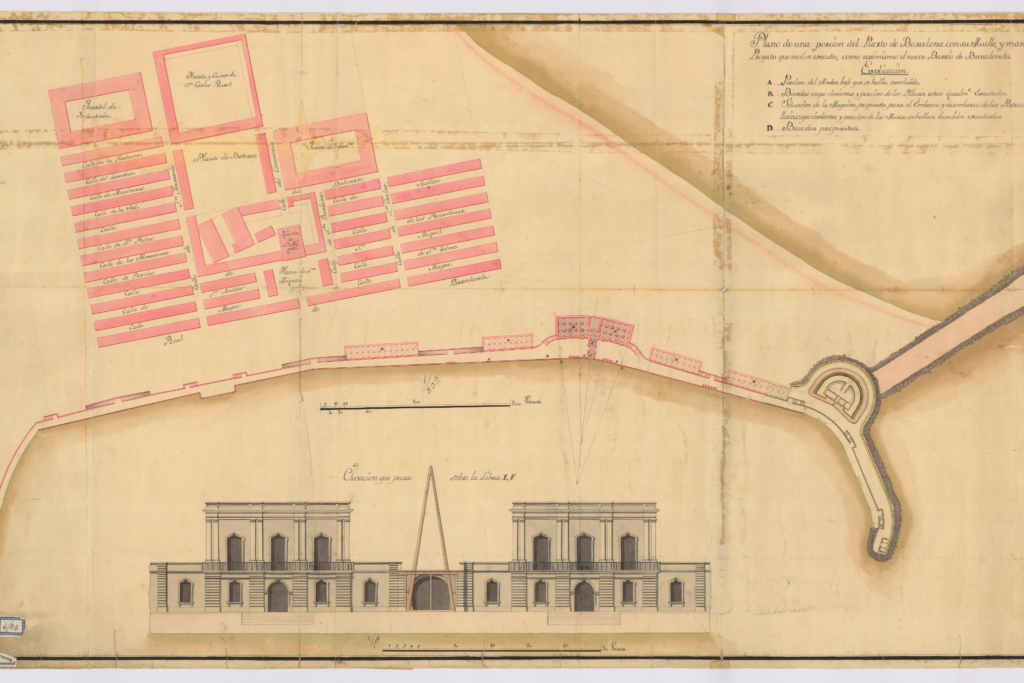
Next to a rubbish bin I’m going to find a very old Gladiator suitcase and

From 9 November to 10 February 2024. On the occasion of the celebration of the

The basket of “La Garba”, raffle on the 5th of January at 12h. Days of

Background Throughout its history, Barceloneta has always been very active at both a commercial and associative
| Cookie | Duration | Description |
|---|---|---|
| _ga | 2 years | The _ga cookie, installed by Google Analytics, calculates visitor, session and campaign data and also keeps track of site usage for the site's analytics report. The cookie stores information anonymously and assigns a randomly generated number to recognize unique visitors. |
| _ga_2DMP7XMBDL | 2 years | This cookie is installed by Google Analytics. |
| Cookie | Duration | Description |
|---|---|---|
| pll_language | 1 year | The pll _language cookie is used by Polylang to remember the language selected by the user when returning to the website, and also to get the language information when not available in another way. |
| Cookie | Duration | Description |
|---|---|---|
| cookielawinfo-checkbox-advertisement | 1 year | Set by the GDPR Cookie Consent plugin, this cookie is used to record the user consent for the cookies in the "Advertisement" category . |
| cookielawinfo-checkbox-analytics | 1 year | Set by the GDPR Cookie Consent plugin, this cookie is used to record the user consent for the cookies in the "Analytics" category . |
| cookielawinfo-checkbox-functional | 1 year | The cookie is set by the GDPR Cookie Consent plugin to record the user consent for the cookies in the category "Functional". |
| cookielawinfo-checkbox-necessary | 1 year | Set by the GDPR Cookie Consent plugin, this cookie is used to record the user consent for the cookies in the "Necessary" category . |
| cookielawinfo-checkbox-others | 1 year | Set by the GDPR Cookie Consent plugin, this cookie is used to store the user consent for cookies in the category "Others". |
| cookielawinfo-checkbox-performance | 1 year | Set by the GDPR Cookie Consent plugin, this cookie is used to store the user consent for cookies in the category "Performance". |
| CookieLawInfoConsent | 1 year | Records the default button state of the corresponding category & the status of CCPA. It works only in coordination with the primary cookie. |
| elementor | never | This cookie is used by the website's WordPress theme. It allows the website owner to implement or change the website's content in real-time. |